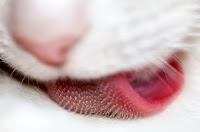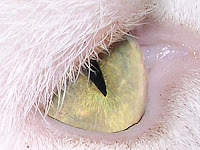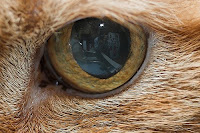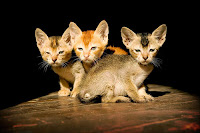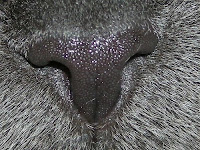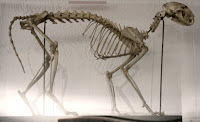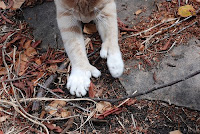My own two cats, one nearly sixteen and one thirteen have been affectionate additions to the lives of myself and my family. I experience daily the tail affection and communication mentioned by the author in his post. My cats after a rub against a leg and tail carress will stand with one back foot on my foot. Please enjoy the U-Tube video at the end of this post.
Books I picked up at the library provided additional information as well as enchanting pictures, they included:
101 Cataclysms for the Love of Cats by Rachel Hale (a beautifully done photo essay with captions and quotes.
Cats 24/7 from the creators of The New York Times best-selling America 24/7 Rick smolan and David Cohen (A photographic book that celebrates the wide world of cats, in more that 500 superb photographs taken by amateurs and professionals.
The following is just a fun and enjoyable video complete with music!
Cat’s Tail by Michael (London, UK)
I’d like to discuss one function of the cat’s tail that I am yet to see mentioned on any webpage or in any book. The tail has many functions. It is well known as a means of communication. I won’t cover this in too much detail because they are largely known but I do see some misconceptions even on the best websites. For example, the tail swishing from side to side is described as signalling anger. This may be the case but not always. Often it is a sign of acute mental conflict and we can see it happen in a cat that is on open manicured ground trying to do the impossible and hunt when there is no cover.The relatively sterile human environment has resulted in the outdoor cat’s natural instinct to hunt to be a source of frustration resulting in emotional turmoil. The conflicting desires are (a) to stay still but on open ground this is wrong and (b) to attack prey, which once again is wrong and will not result in success because the cat is exposed and too far from the prey.
 Another use of the tail is for scent exchange. We know that head butting, flank rubbing is scent exchange and scent sharing is a way for our cat companion to feel more at home. The scent glands are at the base of the tail.
Another use of the tail is for scent exchange. We know that head butting, flank rubbing is scent exchange and scent sharing is a way for our cat companion to feel more at home. The scent glands are at the base of the tail.Yet the behaviour I would like to talk about is the action of a cat’s tail when it is used to touch and feel objects. When, in short, it is used in the same way as our hands.
There are two examples I would like to refer to. Firstly my cat. When I go out in the garden with her she will follow behind and then catch up. When she catches up and passes me her tail curls to my side and gently touches my leg and she may pause and then move on. This is her confirming to herself my position in relation to her and I will presume that is also telling me of her presence. It creates a comfort zone in much the same way scent exchange does. It is not scent exchange because the tip or last third of my cat’s tail is touching me, no more.
The video below of MAGIC the tallest domestic cat and now a famous cat because of that, demonstrates this beautifully. Although I think Scarlett’s MAGIC is both touching and scent exchanging simultaneously. Most of the interaction from MAGIC is scent exchange but I feel not all of it is.
You can see the whole tail curl around the Andreas’s head as if it is feeling the head and caressing his head. It is great to see. Here is the video:
